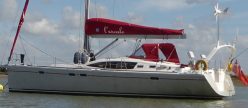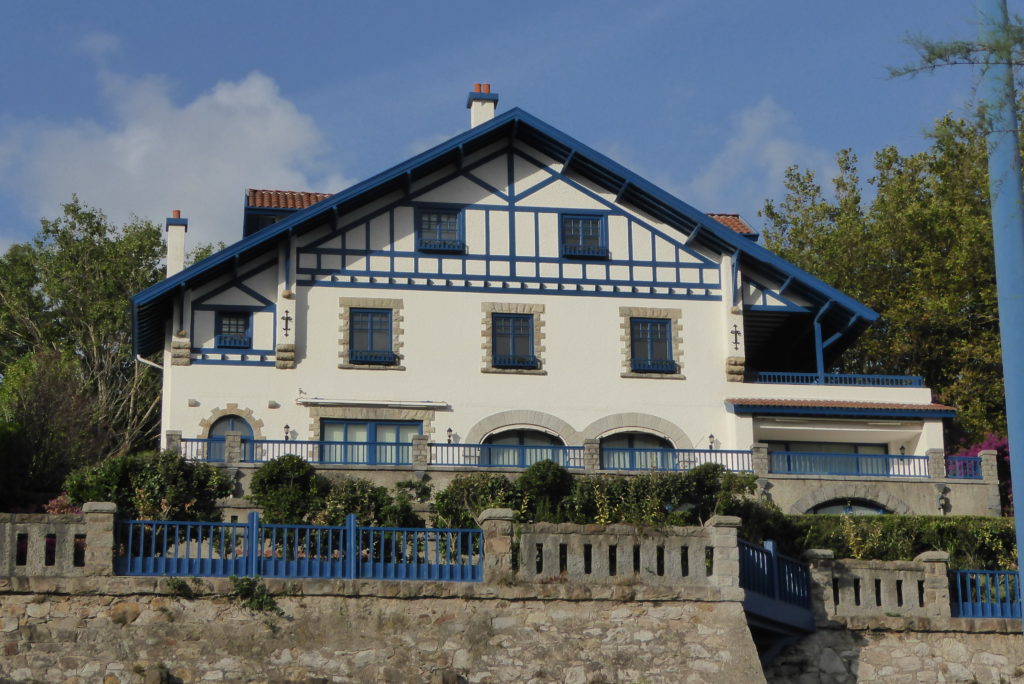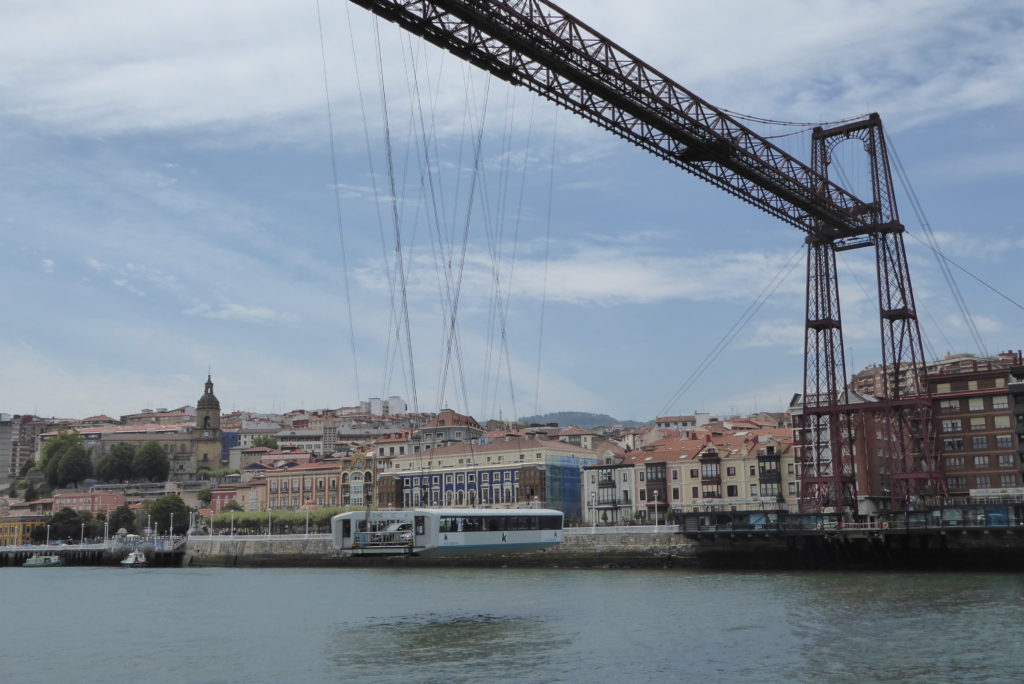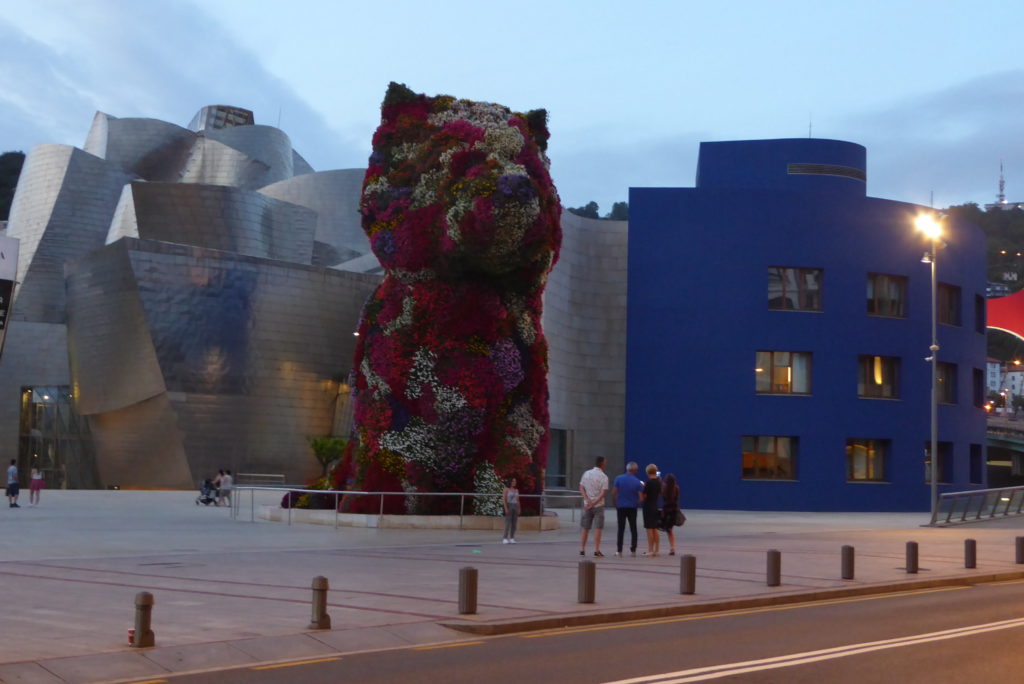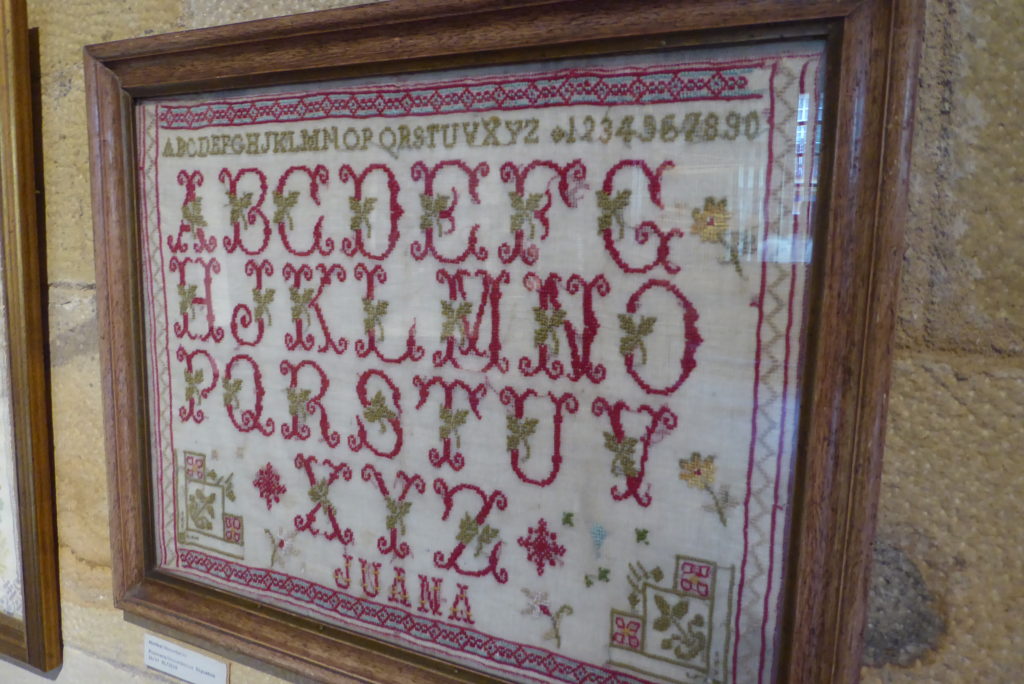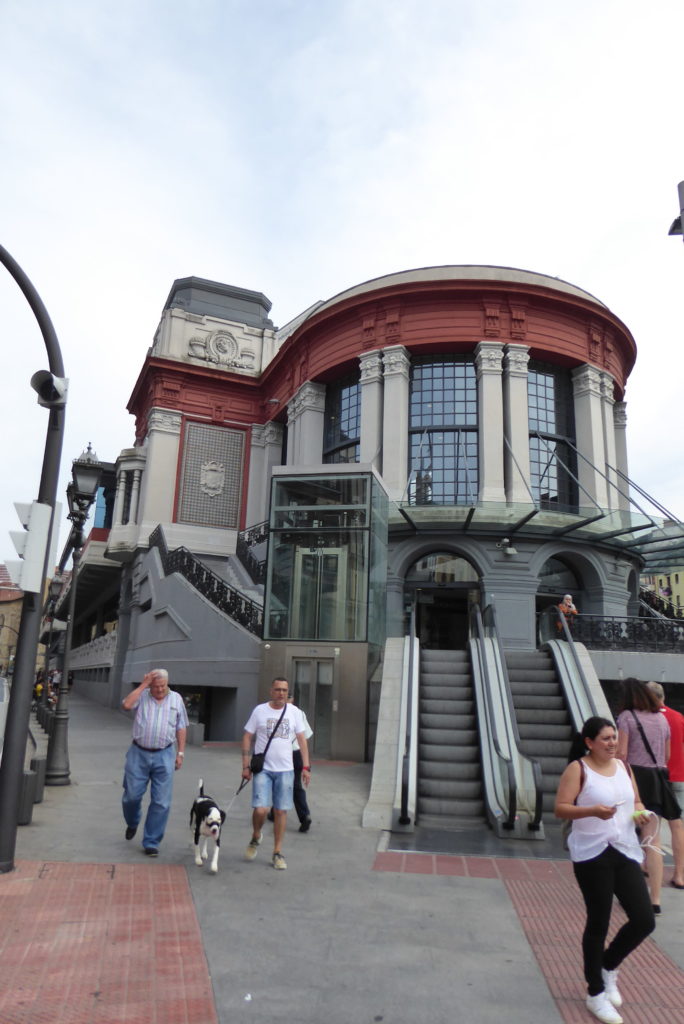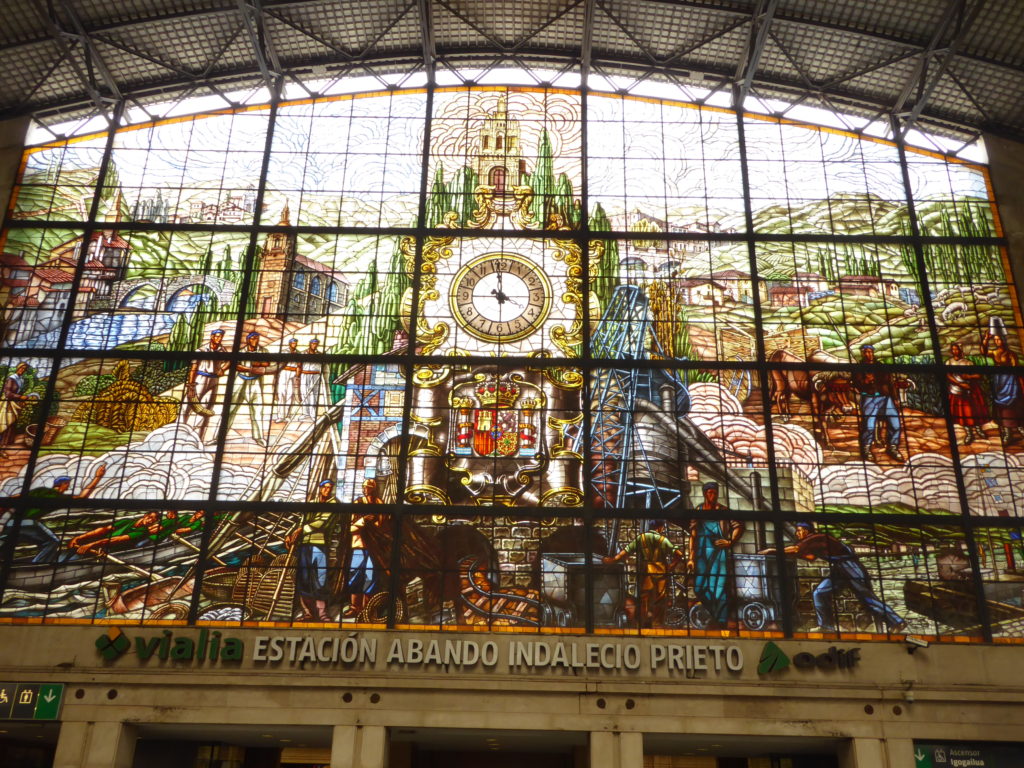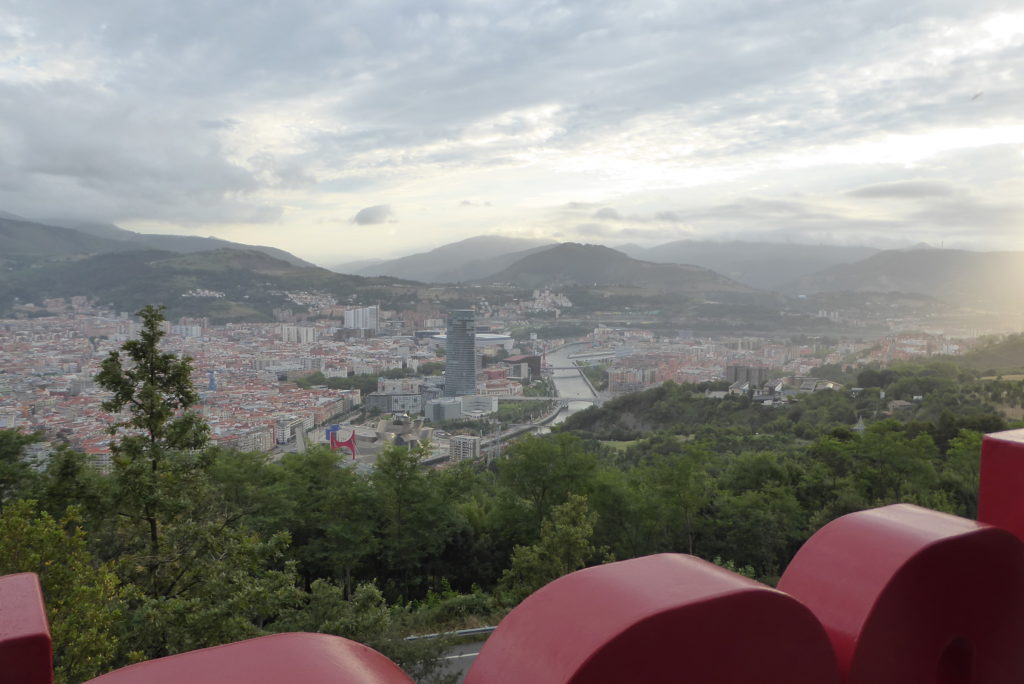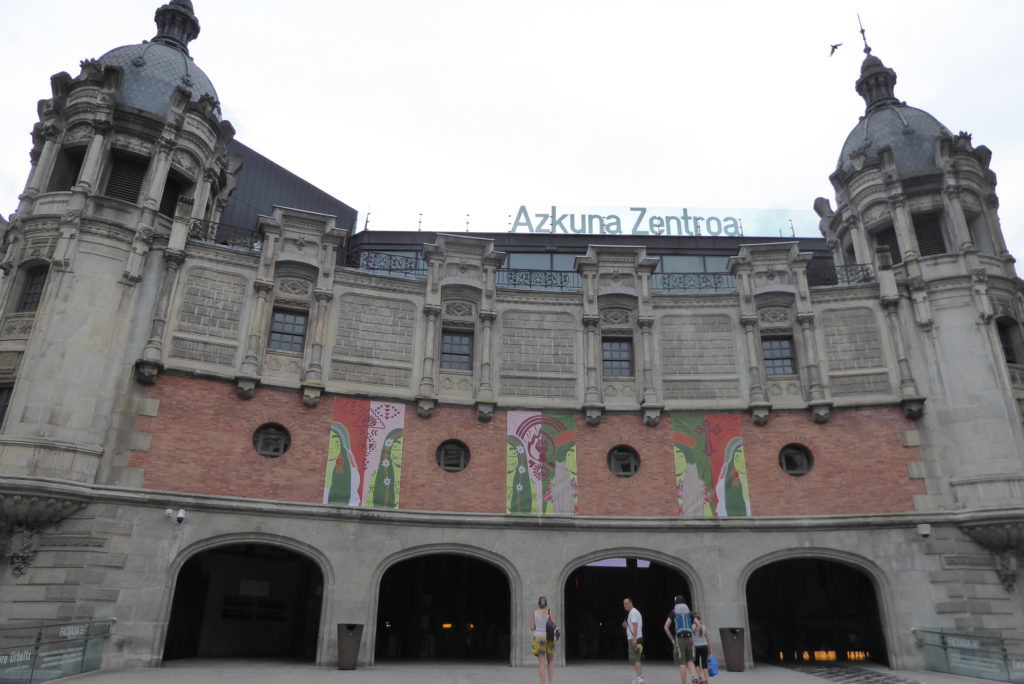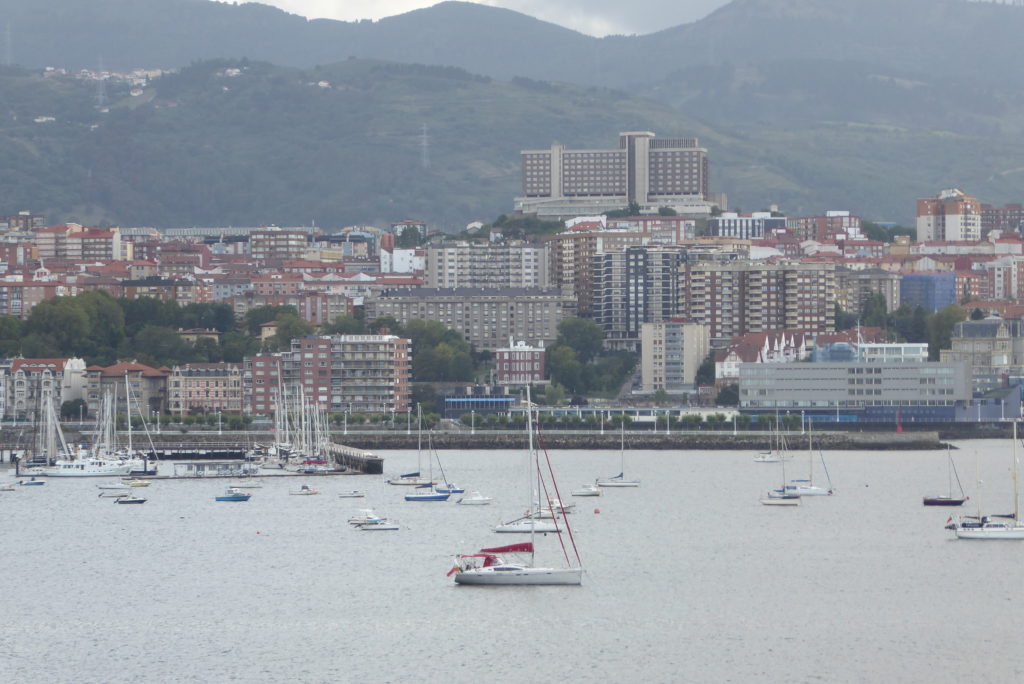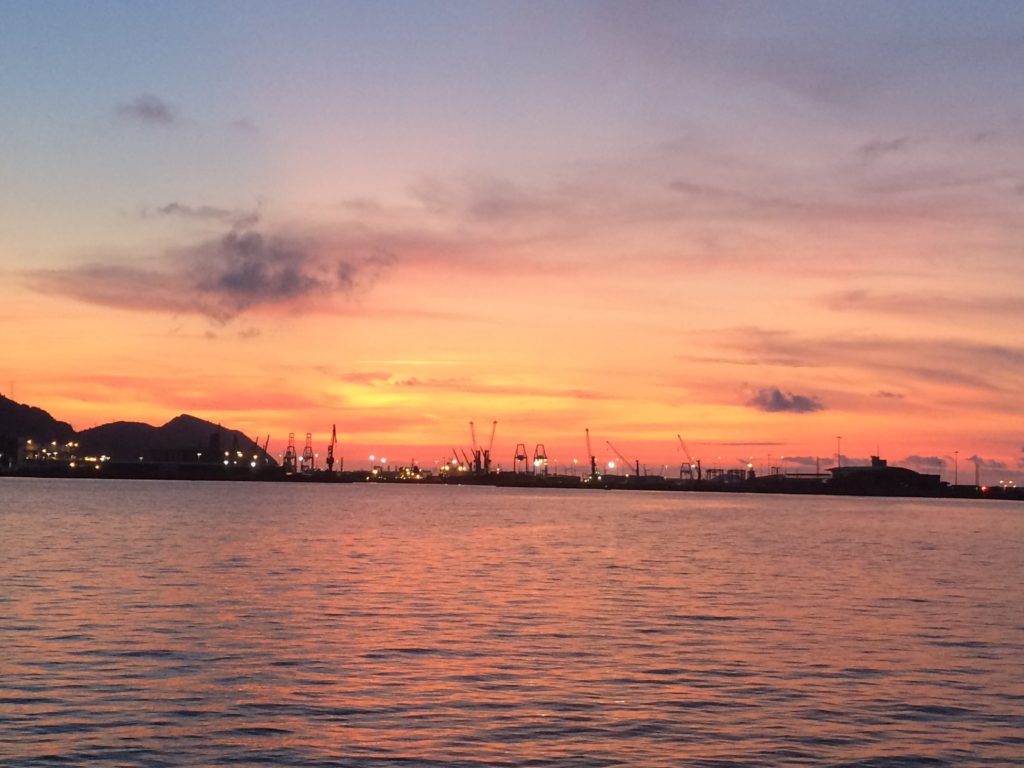Wednesday 14 – Saturday 31 August
Just as we were ready to leave Bilbao, the Guardia Civil decided to “have a chat with us” and fill in the same paperwork all over again as we’d already completed with the Customs guys a week ago. Needless to say, we smiled sweetly and remained polite and helpful…
We had a final couple of quiet nights in the bay, before finally heading West again on Wednesday, lowering the Basque courtesy flag as we cleared the outer breakwater. We made an 11-hour passage, dropping anchor just outside Santander, in what looked like a quiet bay, for an overnight stop. Once all the day trippers had left for home, and the golfers on the course above us had given up for poor light, it was just us – and the wedding couple being photographed on the beach against the sunset. Unfortunately the swell kicked back in, and it wasn’t the most comfortable of anchorages.

in the salt marsh
On Thursday we covered only 14 sea miles in a continuing uncomfortable swell, with winds (also) up and down. We followed the Rio (river) Suances to anchor alongside the training wall in what is effectively tidal salt marsh: a fascinating array of bird life including heron and an osprey. At last we had a completely peaceful night.
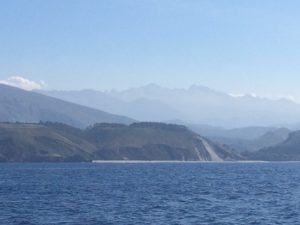
On Friday morning it took us a while to lift the second (kedge) anchor at our stern, placed to ensure we didn’t turn and block the channel as the tide rose and fell in the river. Once back out at sea we enjoyed dolphin spotting, and avoiding lobster pot floats, set in 80 metres of water. The coastal scenery here is beautiful, fronting a backdrop of majestic mountain ranges rolling away inland. Eventually the afternoon breeze filled in, and we finally tied up safely, after trying to understand the well-meaning advice of the locals
[follow me: you’re heading for a sandbank; don’t tie up there, you’ll fall over
when the tide goes out]
to the right bit of the town quay wall in Ribadesella, in time for supper on land with a view of the sunset – our reward for a 55-Mile day. A brief stroll through the busy streets suggested an attractive town with lots to offer the passing sailor: especially the unique way of serving the local ‘sidra’, or cider – by pouring it from a great height.
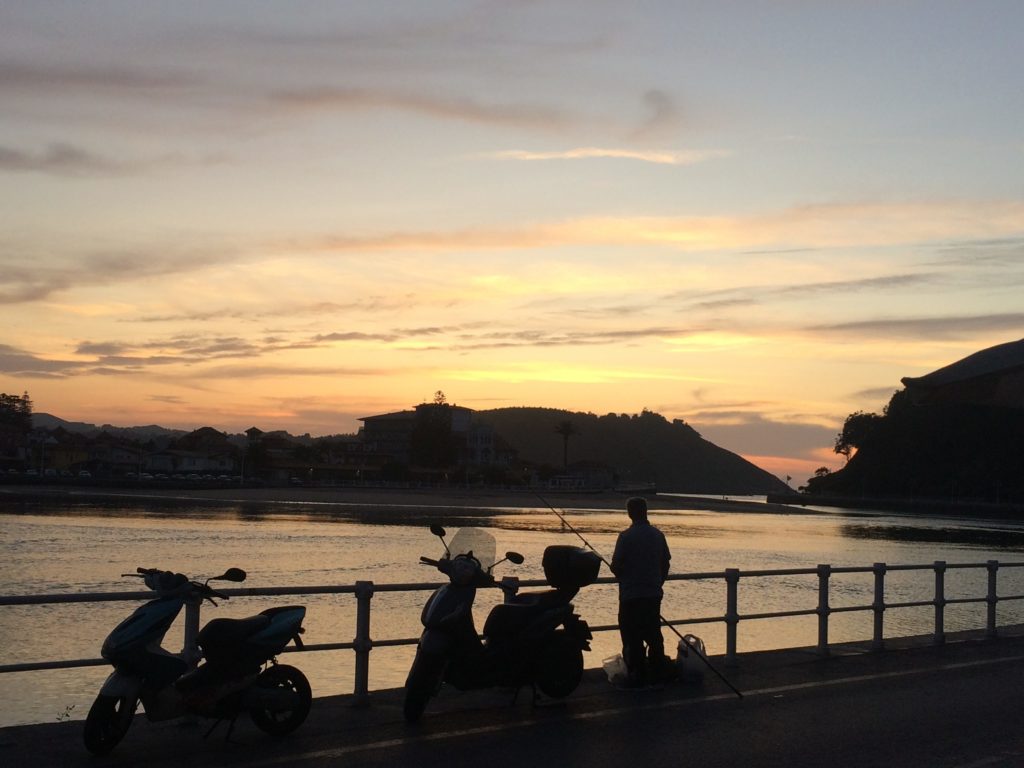
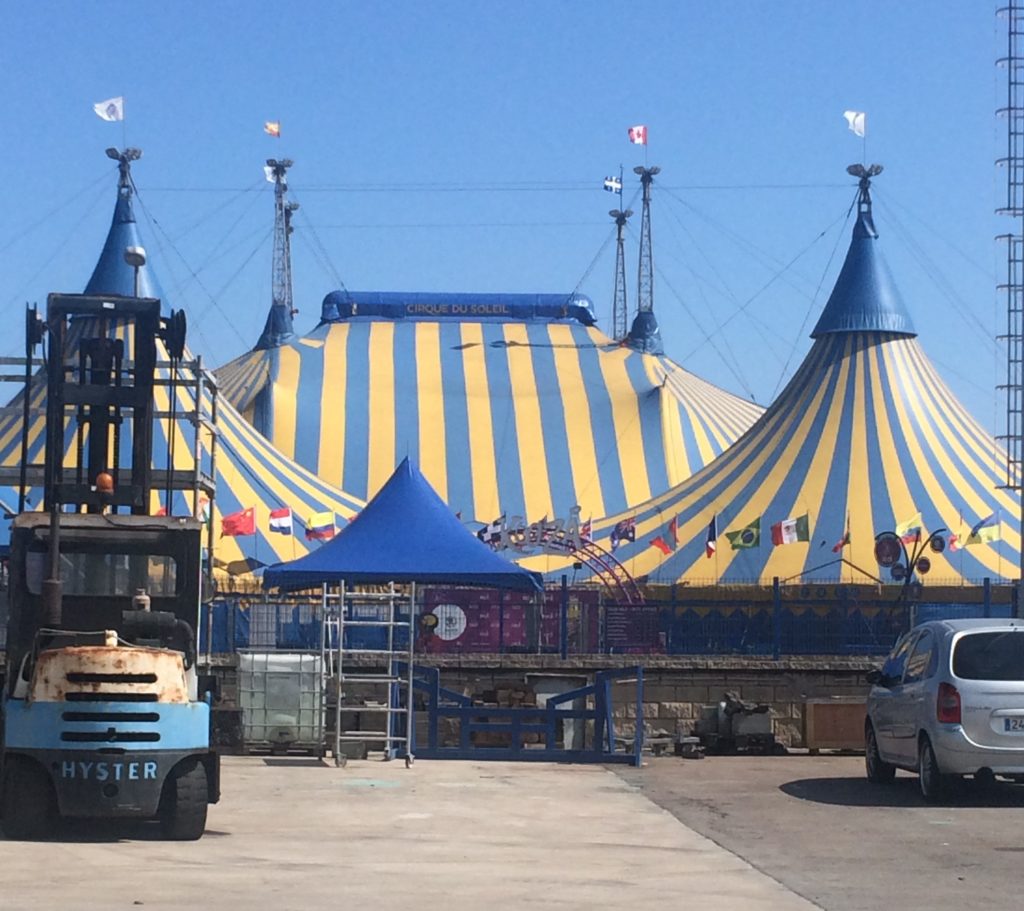
On Saturday we covered a further 26 Miles in fairly light winds to slip into Marina Yates in Musel, on the West side of Gijón. Now in Asturias, we received a warm welcome from Montse, who speaks really good English and couldn’t do enough to help. Once again, we completed the appropriate paperwork, in our experience required in every Spanish port, along with passports, crew list, insurance and registration documents. Cirque du Soleil was in town, right next to us in the ferry port, with Kooza, but having seen a different show at the Royal Albert Hall in January, we didn’t indulge this time, just enjoying snatches of the soundtrack.
We spent longer than we expected here, dealing with some routine servicing, dithering about the forecast wind conditions outside the very sheltered marina, and cycling into town for provisioning and a little sightseeing. Mate collected an impressive set of bruises down both calves when Daisy, her bicycle, decided to have a strop at a pedestrian crossing, and throw herself on the pavement complete with two loaded panniers – and Mate wasn’t even riding her at the time.
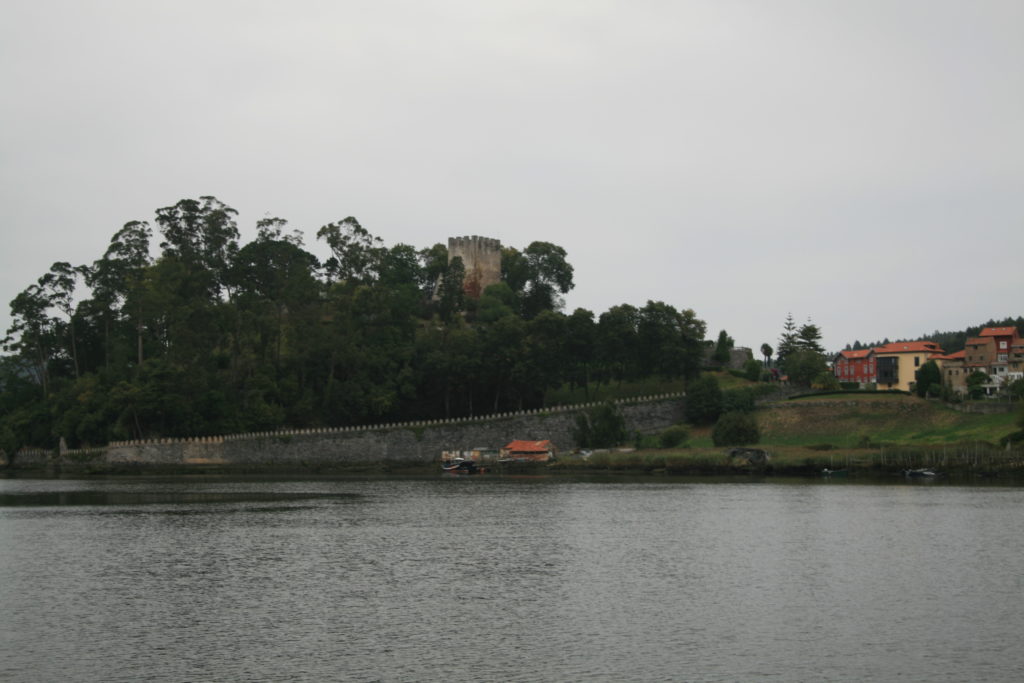
just up-rio of San Esteban de Pravia
On Friday 23 August we finally slipped our lines, paused to take on around 500 litres of diesel (€ ouch €), and had a somewhat surreal day, sailing West some 400 Miles South of the UK, but hearing clearly on the VHF radio Falmouth Coastguard dealing with an incident in ‘home’ waters. Fortunately we also picked up the closing message that the divers had been found safe and sound. Meanwhile we enjoyed a comfortable beam reach, heading in the same direction as the relatively low swell. We settled for the night in a lovely spot just above a small castle on a bend of the river above San Esteban de Pravia, enjoying a brief swim after the heat of the day.
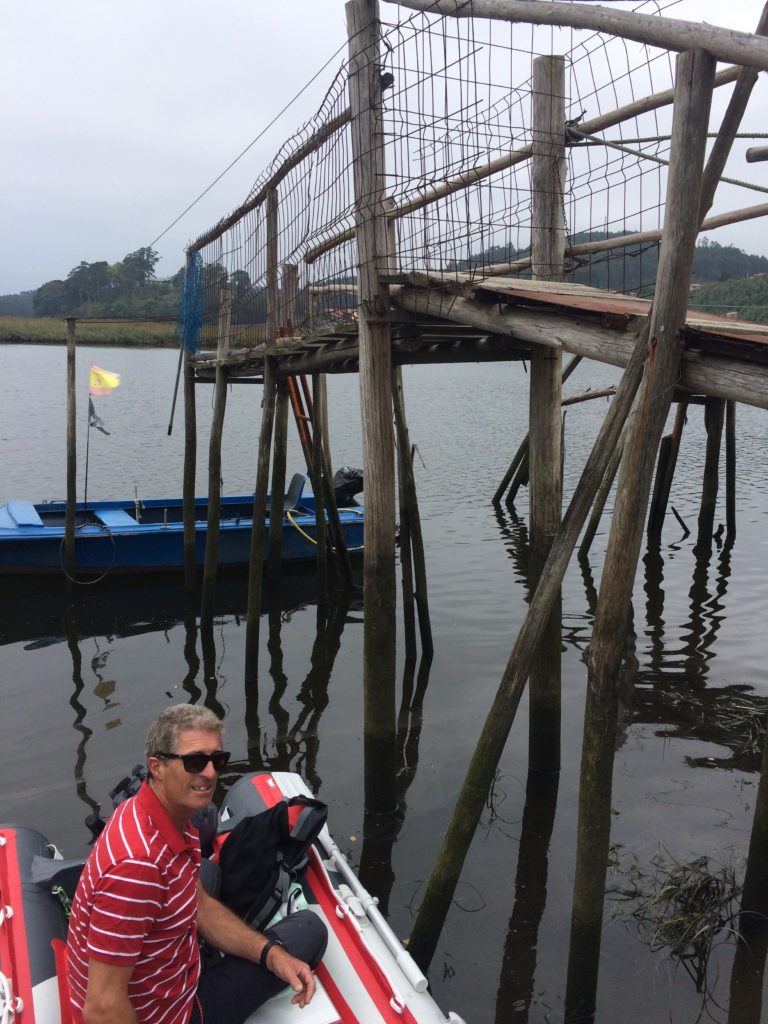
or even safe?
On Saturday we took the dinghy to shore, and found a somewhat dubious landing beside some rickety fishermen’s platforms that jut out into the river. We secured l’arret carefully and walked beside a main road uphill to find a small town with a smaller supermarket. Having ticked off almost none of the items on the shopping list, we then spotted a group of shops we’d missed on the way in, one of which was a much bigger, more pleasant store with a good butcher’s counter, fresh fruit and vegetables, and even a few gluten free items. It turns out that Soto del Barco is a pilgrim rest point on the Camino: one can only hope the accommodation offers more than the provisioning.
We sat out a rainy Sunday that included a thunderstorm, wondering if Summer was coming to an end already. We were entertained trying to be twitchers and identify local bird life: we definitely saw a kingfisher, what might have been a buzzard high overhead, and a large version of a dipper along the water’s edge.
Not in Spain, but in the UK, Bank Holiday Monday was cloudy with very little wind. We set off anyway and enjoyed a pod of dolphins leaping off Cabo Vidio. With better wind in the afternoon, we made some good speed, ending the day 32 Miles further along the coast and a couple upriver to Navia, where we had a free night alongside the Club Náutico Deportivo pontoon, just below a road bridge. Once again, we were the object of much interest, with people standing staring from the quay wall, and often taking photos.
The following morning, we took a brief stroll around this rather uninspiring town, finding a supermarket that sprawled endlessly around odd corners – not uncommon here. After lunch onboard we slipped the lines and in a repeat of the previous day’s conditions, pottered another 19 Miles to the Ria de Ribadeo. Once again, we pushed against the swell to enter the ria from the sea, finding much calmer water inland of the coastline, where we dropped the mainsail as the waves crashed against the rocks, before passing under the 30-metre high road bridge to anchor off Castropol, on the Eastern side. The view up the ria towards the hills was reminiscent of the Lake District, especially when it became shrouded in mist.
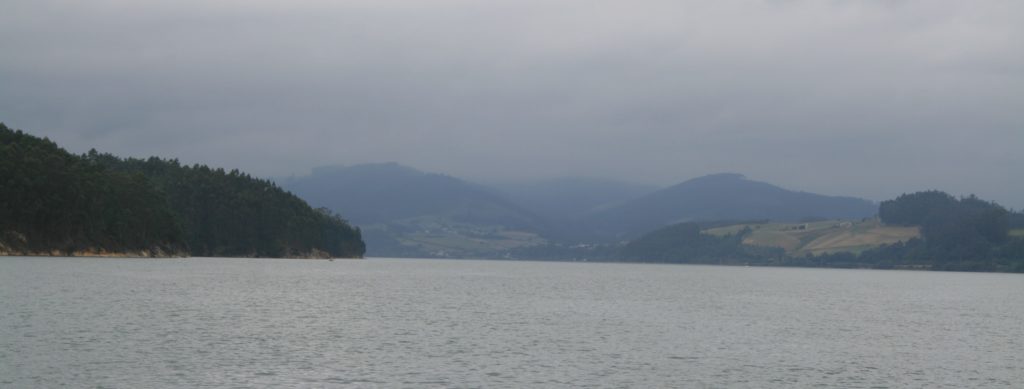
This ria (river estuary) is wide and shallow, with sandbanks that shift constantly, so we were careful to watch our depth sounder readings, and also not to drop anchor on a vivero, where shellfish are farmed. On Wednesday we needed to hop across to Ribadeo marina to take on water, but as we weren’t staying overnight in this bouncy, uncomfortable berth, we were charged twelve euros for the privilege. We escaped briefly as soon as possible for a leg-stretch up the steep hill into the attractive old town, and were glad to slip back to our calm, comfortable anchorage for another quiet night.
We celebrated our 24th wedding anniversary sailing the final leg of our not-quite pilgrimage along the seaward route of the Camino de Santiago de Compostela, 90 Miles to A Coruña. We set off mid-afternoon from Ribadeo, raising the mainsail as we headed into the wind and out to sea. Once clear of the ria, and heading West once again, the airs were light enough to use the gennaker instead of the genoa, but the wind soon backed, spoiling our angles, so we changed back to the genoa. In the evening we had our first proper visit by dolphins, a group of six to eight playing around the boat for a good 15 minutes. A Spanish warship, on patrol locally, called us over the VHF and politely requested most of the usual information, in a friendly manner.
We motored for a short spell, until at sunset the wind picked up and we were soon down to the first reef in the mainsail, and the staysail. We were very puzzled by a visit from an owl, possibly a little-eared owl, who looked like (s)he wanted to land on our very unstatic tree, but gave up after a couple of circuits and headed back inland. Soon afterwards Mate spotted a tail sticking up out of the water surface right alongside the boat, and a huge eye apparently looking us over…it might have been a trigger fish?
Mate took the first night watch, until 0200 on Friday morning, just keeping a good lookout for any shipping, especially fishing vessels, which are not always lit but are always unpredictable in their movements. She enjoyed ‘joining the dots’ of the lighthouses, Los Sigüelos at Punta Estaca de Bares, and at Cabo Ortegal. Our speed was so high, she was concerned we would arrive before daylight, and left the sails poorly set for the wind angle, to slow us down to six or seven knots through a fairly lumpy swell.
Very tired and cold by the time Skipper relieved her, she tried to doze in the cockpit, until called to assist with a gybe as we changed course somewhere off Cedeira at 0330. Eventually conditions calmed a little and she snuggled below into a warm sea berth, glad to sleep properly. Having maintained Force 4-5 all night from the NE or NNE, as light began to seep into the early morning sky the wind dropped right away; Mate’s entry in the log at 0730 reads “glad to get off the rollercoaster”. We made a misty landfall to anchor opposite the city in Ensenada de Mera, settling down for a proper rest just as the rest of the world was beginning its working day, at 0925. Distance: exactly 90M; average speed: for us, a very respectable 5 knots, over 18 hours.
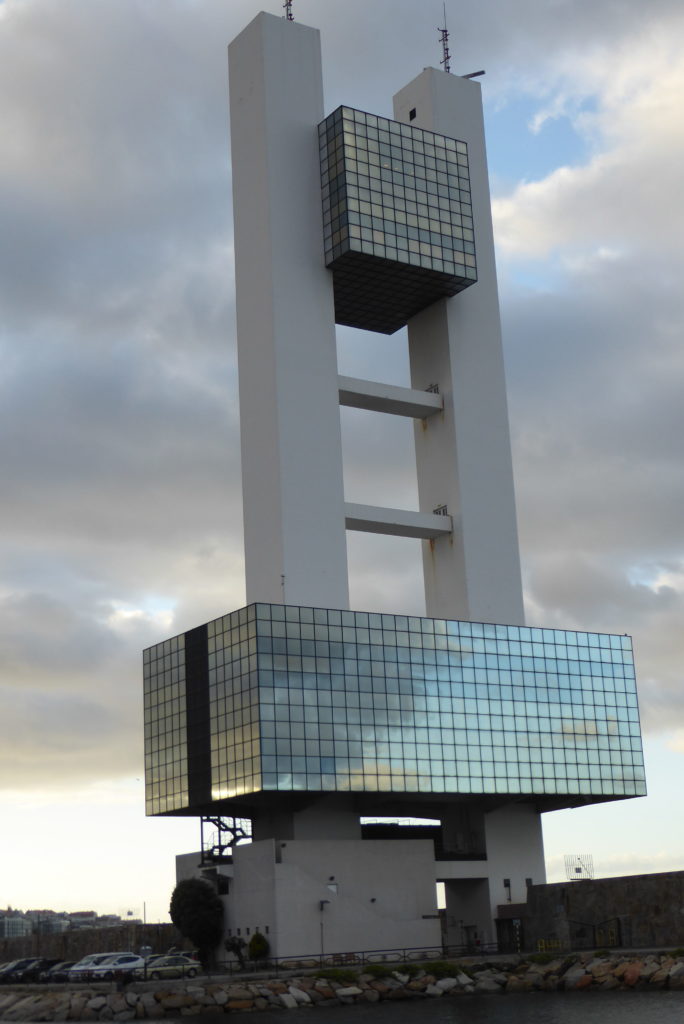
After a lazy Friday afternoon and Saturday morning, we pottered across the bay to find a berth in Marina Coruña, amongst an array of international flags. This is the first marina that feels transient: yachts are passage-making, rather than just sitting here most of the year going nowhere. Between the marina and the commercial port area stands the Castillo de San Antón, now a museum of archeology and history, beautifully floodlit at night, while the marina is guarded from the breakwater by the port control tower, a distinctive ‘rugby goal post’ of glass and concrete.
